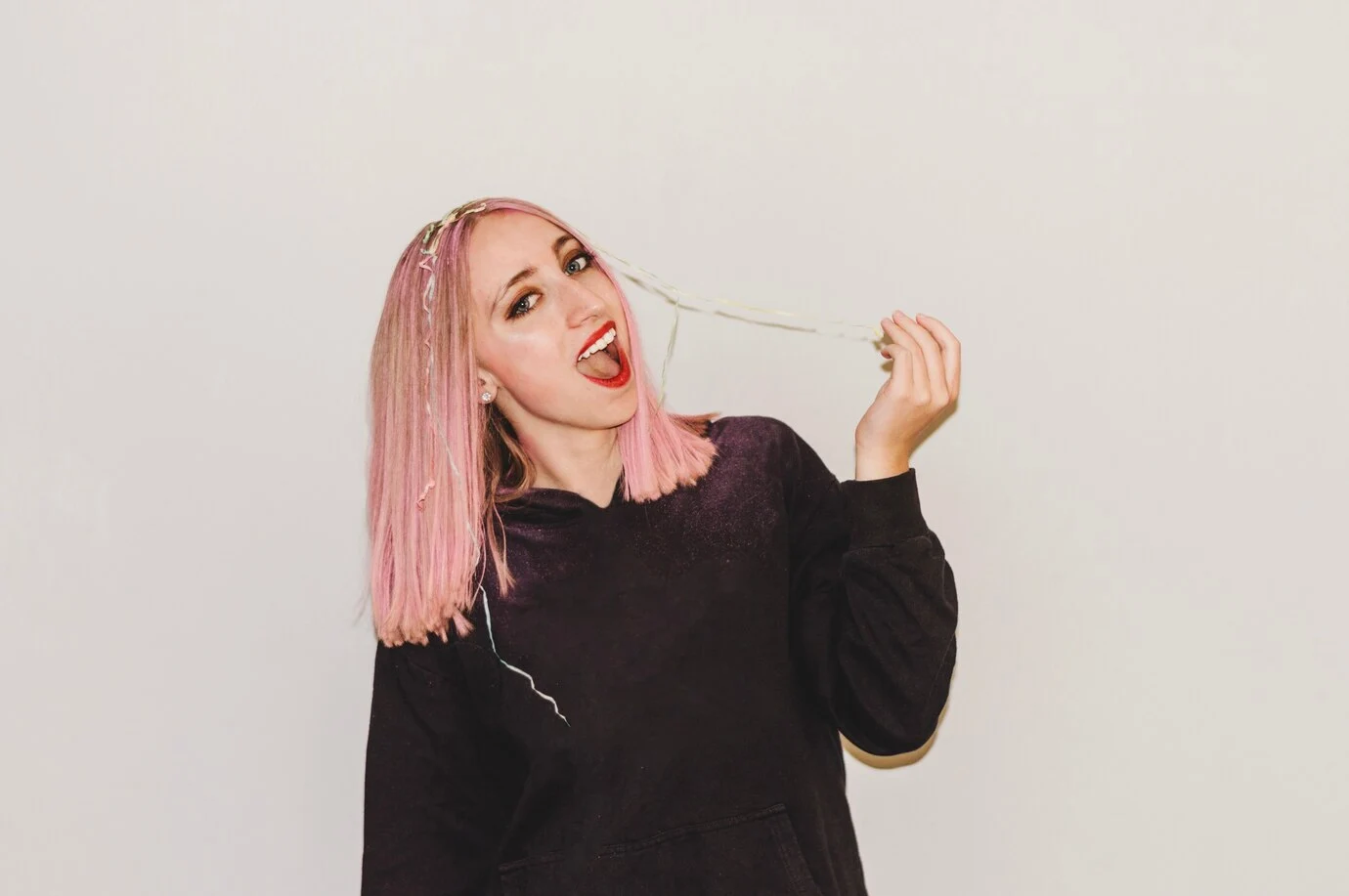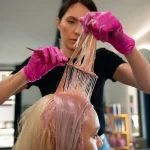Thinking about dyeing your hair pink after bleaching? You’re not alone! Pink is one of the most popular hair colors, offering a fun and bold way to express yourself. But before you dive into this transformation, there are some key things to consider. From understanding the bleaching process to choosing the right pink shade and maintaining your new look, this guide covers everything you need to know.
Step 1: Understanding the Bleaching Process
Bleaching is the first and most crucial step in achieving a vibrant pink. The success of your pink dye depends on how well your hair lifts during the bleaching process.
What Happens When You Bleach Your Hair?
Bleaching removes pigment from your hair, making it lighter so that the pink dye can show up more vividly. If you have dark hair, you may need multiple bleaching sessions to achieve the best results.
Pro Tip: If you want a soft pastel pink, your hair should be lifted to a pale yellow or platinum blonde. If your hair is brassy, you may need a toner before applying pink dye.
Is Your Hair Ready for Bleaching?
Bleaching is a chemical process that can weaken hair, making it dry and prone to breakage. To check if your hair can handle bleaching, perform a strand test first.
Signs Your Hair Needs Strengthening Before Bleaching:
- Feels brittle or rough
- Snaps easily when stretched
- Lacks shine and moisture
If your hair is damaged, strengthen it with deep conditioning treatments and protein masks before bleaching.
Personal Anecdote: I once rushed into bleaching without preparing my hair properly. The result? My hair turned into a frizzy mess! After that, I always use coconut oil treatments before bleaching to keep my hair strong and hydrated.
Step 2: Choosing Your Perfect Pink Shade
Not all pinks are created equal! Depending on your style and base color, you can go for:
Pastel Pink
A light, subtle pink that requires a platinum blonde base. It’s soft, feminine, and fades gracefully.
Bubblegum Pink
A slightly more saturated version of pastel pink. Works best on very light blonde hair.
Hot Pink or Fuchsia
A bold, vibrant pink that works on lighter blondes or pre-toned hair.
Rose Gold or Dusty Pink
A sophisticated pink with golden or muted tones, perfect for a more natural look.
Pro Tip: If you’re unsure which shade suits you best, start with a semi-permanent dye to test the waters. These dyes fade gradually, so you can experiment with different pink tones.
Step 3: Preparing Your Hair for Pink Dye
Once your hair is bleached and toned, it’s time to prep for the dyeing process. Healthy hair holds color longer and fades more beautifully.
Hydration is Key
Bleached hair loses moisture, making it prone to dryness. Use hydrating masks and deep conditioners in the weeks leading up to dyeing.
Avoid Heat Styling
Minimize the use of flat irons, curling wands, and blow dryers to prevent further damage.
Personal Anecdote: Before I dyed my hair pink, I switched to a sulfate-free shampoo and started using leave-in conditioners daily. It made a huge difference in how my hair absorbed and held onto the pink dye!
Step 4: Applying Pink Dye Like a Pro
Now comes the fun part—applying the pink dye! Follow these steps for the best results:
- Start with Clean, Dry Hair: Wash your hair 24-48 hours before applying dye. Avoid conditioner to allow better dye absorption.
- Section Your Hair: Divide your hair into small sections to ensure even coverage.
- Apply Dye Generously: Use a brush or gloved hands to apply the dye from roots to ends. Saturate each strand fully.
- Let It Process: Follow the instructions on your dye. Most semi-permanent pink dyes need 20-40 minutes to set.
- Rinse with Cool Water: Avoid shampooing immediately. Just rinse with cool water to help seal the color.
Step 5: Maintaining Your Pink Hair
Pink hair is high maintenance, but with proper care, you can keep it vibrant for longer.
Use a Color-Safe Shampoo
Sulfate-free shampoos are a must! Harsh shampoos strip color quickly, making pink fade faster.
Wash Hair with Cold Water
Hot water opens the hair cuticle, leading to faster fading. Rinse with cool water to lock in the pink pigment.
Refresh Your Color Regularly
Pink fades faster than other colors. Use a tinted conditioner or mix a small amount of pink dye with your regular conditioner to refresh the color.
Limit Heat Styling
Excessive heat can dull your color. If you must style your hair, always use a heat protectant.
Personal Anecdote: I found that adding a bit of pink dye to my conditioner kept my color looking fresh for weeks! No need for constant touch-ups.
Common Mistakes to Avoid
❌ Skipping the Toner: If your hair is brassy, pink dye can turn orange instead of soft pink. ❌ Over-Washing: Washing your hair too often will fade the pink color quickly. ❌ Using the Wrong Products: Shampoos with sulfates and alcohol-based styling products strip color.
Final Thoughts
Dyeing your hair pink after bleaching is an exciting transformation, but it requires care and patience. By following these steps—bleaching properly, choosing the right shade, prepping your hair, applying dye correctly, and maintaining your color—you can enjoy a stunning pink mane without unnecessary damage.
Final Tip: Embrace the process and have fun with it! Hair color is a form of self-expression, and pink is the perfect shade to showcase your personality.
Are you ready to rock pink hair? Let us know your favorite pink shade and your experience in the comments below!
Read More About Pink Hair Dye Articles
For more information on related topics, check out our detailed guides:
-
-
How to Remove Pink Hair Dye and Achieve Your Dream Hair Color
-
Is Stripping Pink Dye Right for You? A Guide to Weighing Your Options
-
Hot Pink Hair for Every Hairstyle: From Short Cuts to Long Locks
-
Pink Hair on Dark Hair? Can You Dye Dark Hair Pink Without Bleaching?
-
Pink Hair Dreams? Is Pink Dye Right for You? A Beginner’s Guide




